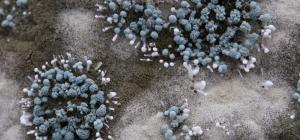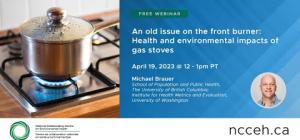
Focus on health in the balance of energy retrofits and indoor air quality

In Canada, the building sector contributes to 18% of annual greenhouse gas emissions (GHG) and transforming our building stock is now a well-recognized priority for meeting globally agreed upon GHG reduction targets. Building new and more energy efficient buildings will help, but renovating our existing housing stock is seen as one of the cheaper and more achievable ways to meet climate targets. Generally referred to as “retrofitting”, energy renovations can be minor (e.g., sealing cracks and gaps or adding insulation), major (e.g., replacing windows and doors and updating heating system), or deep (e.g., extensive overhauls of systems). These changes can lead to lower energy use and thus reduce the cost of mechanically heating and cooling homes. In theory, by doing so, GHG emissions may be reduced.
Energy efficiency efforts can trap pollutants such as radon gas indoors
Energy renovations often change a home’s ventilation patterns, as buildings are tightened or sealed to reduce energy loss. This can have a direct consequence for indoor air quality (IAQ). One contaminant in particular, radon gas, appears to be especially impacted by energy retrofits. Radon is a soil gas released as a part of the uranium decay process. It is a carcinogenic gas that can enter buildings through cracks in the foundation, sidewall, or areas around pipes and drains. Radon is an odourless, colourless, and invisible gas, and is the second leading cause of lung cancer and is therefore a serious health concern in Canada where many regions are known to have elevated levels.
Evidence of elevated radon due to energy efficiency efforts dates back to the 1980s
Radon was first identified as an indoor airborne hazard in residential homes in the 1980s through research supported by the US Department of Energy (DOE). This agency examined homes built to different standards and found from testing that energy efficient homes tended to have higher levels of radon. At the time it was recognized that efforts to prevent warm air from escaping homes also served to trap gases and other pollutants indoors, thus allowing levels to build up over time and increasing cancer risk for occupants.
In the late 1980s and 1990s, researchers in the UK and Europe began studying indoor radon and found that airtight homes and those with fewer air exchanges were more likely to have higher levels of radon. Different methods have been used to study this phenomenon, including modeling how energy renovations contribute to elevated radon levels, and using existing databases to examine radon levels and efficiency efforts. Both approaches reached similar conclusions: increased radon was found by (i) reducing natural ventilation; (ii) sealing cracks; (iii) adding more efficient windows, doors, or insulation. Milner et al estimated that energy efficiency efforts increased radon levels on average by 56% and would contribute to an annual excess of 278 lung cancer deaths in the UK.
Considerations on retrofits in apartments and townhouses
Energy retrofit research has been conducted mostly in single family homes, which generally have ground contact or basements. However, many people are now living in more densely designed housing. To date, only a small body of research on multi-unit residential buildings (MURBS) retrofits and radon has been conducted. UK research on building design has determined that apartments (flats) tend to have lower levels of radon than row houses (townhouses) or detached homes due to a lack of ground contact from where the radon is emitted. Energy efficiency research and radon research in MURBS conducted in North East Europe and Russia show mixed results, with some retrofit efforts increasing and others having no impact on indoor radon levels. Caution is noted though for these results as this work has been done in buildings whose materials and design differ considerably from those in Canada. More research is needed to better understand how retrofits may impact radon levels in Canadian MURBs.
US research holds important insights for the Canadian housing sector
The most relevant research on the association between energy efficiency retrofits and radon levels for Canadians comes from the USA where construction materials, practices, and standards are similar. The US DOE’s 2020 Building Assessment of Radon Reduction Intervention and Energy Retrofits Expansion (BEX study) synthesizes extensive research on radon levels pre- and post- weatherization efforts (sealing of cracks, replacement of leaky doors and windows). The BEX study is comprised of US research showing that simple strategies that reduce energy costs increased radon levels by 22% on average. This relationship was more pronounced in states with higher radon levels.
To overcome the problem of increased radon after weatherization, US scientists studied options to help offset increased radon levels. These included adding mechanical ventilation, sealing sump pump covers and adding plastic over dirt floors, if present, during energy retrofits. These interventions did prevent radon from increasing on the ground floor, although levels in basements could increase when adding ventilation on the upper floors. The BEX study strongly recommends that non-exhaust ventilation options (balanced systems or those with air intakes) be added to weatherization efforts to prevent increased radon. Adding ventilation to the basement may be warranted, particularly if it is used for sleeping or is the lowest living area.
Importantly, the BEX authors noted that the added precautions during retrofitting only prevent radon levels from increasing. These techniques do not reduce levels if home radon levels were high prior to retrofits. Homes with elevated radon still require radon mitigation systems (sub-slab depressurization) to safely remove radon from the indoor environment.
Radon levels in newer, more energy efficient homes
Many newer homes are designed to be more efficient and use less energy and this may increase the average radon exposure over time for their occupants. This has been shown in Canadian research that found radon levels in new builds are steadily increasing over time. Russian and UK research confirm this increasing trend in their own housing stock. An evidence review on the topic of radon levels in European homes built after 2010 suggests that efficiency measures create more of a radon problem in regions with higher soil gas concentrations, particularly if mechanical ventilation is not part of home ventilation systems.
Research of homes built to higher energy performance standards (such as Passive or Minergie homes) found that these designs may be less likely to draw radon into homes, due in part to better foundation sealing, the use of heat pumps and balanced ventilation systems. While promising, these types of high-performance homes are not typically built on a large scale in Canada.
Other contaminant levels also impacted by energy retrofits
Radon is not the only indoor air pollutant influenced by increased home airtightness as Volatile Organic Compounds (VOCs) and other contaminants can also increase after renovations. A review of indoor air quality and energy retrofit research conducted by Fisk et al (2020) found that increased radon gas was the clearest and more consistently elevated pollutant measured after retrofits, but that other IAQ parameters such as formaldehyde levels could also be impacted. Increased problems with mould can also occur if strategies to control indoor humidity are not addressed during retrofits.
Balancing human health and climate goals going forward
Canadian governments are increasingly promoting energy retrofits to homeowners through awareness campaigns, grants and subsidies. These efforts are important as incentives for saving money for residents and helping to address climate change. Now is also the right time to start talking about indoor air quality, particularly those contaminants like radon that are sensitive to sustainability efforts such as retrofits. Analyses done by the BC Lung Foundation found that radon levels were not addressed within most energy efficiency programs across Canada. Raising the issue of energy retrofits and radon is particularly urgent as many regions in Canada are known to have high radon levels.
Change is happening in other parts of the world around the linkage concerning health impacts from increased exposure to radon and other indoor air contaminants and sealing of homes tightly for energy efficiency. Some European grant programs are finally making the connection between radon and energy retrofits, an example being Germany’s Radon Handbook. In 2021, the EPA issued their “Energy Savings Plus Health” guide, which flags radon as a contaminant of concern when undertaking home energy renovations. This guide advocates for pre- and post- retrofit radon testing and adoption of the precautionary measures put forward by the US DOE’s radon research, particularly added or balanced ventilation options that don’t aggravate radon levels. It also clearly states that energy retrofits are not substitutes for radon mitigation systems and that basement living or sleeping areas are vulnerable to increased radon.
It has been forty years since the first signal emerged that energy efficiency efforts could increase indoor radon levels. Canadian public health professionals can help by advocating for indoor air quality within energy efficiency programs, particularly those offering grants and financial incentives for renovations. They can also raise awareness in the building trades about the problem of radon post-renovations and continue to encourage radon testing in all homes regardless of property age or configuration. Testing for radon and then mitigating it is the best way to reduce the morbidity and mortality associated with indoor radon exposure over time.
Author
Anne-Marie Nicol is an EH & KT Scientist at the NCCEH








